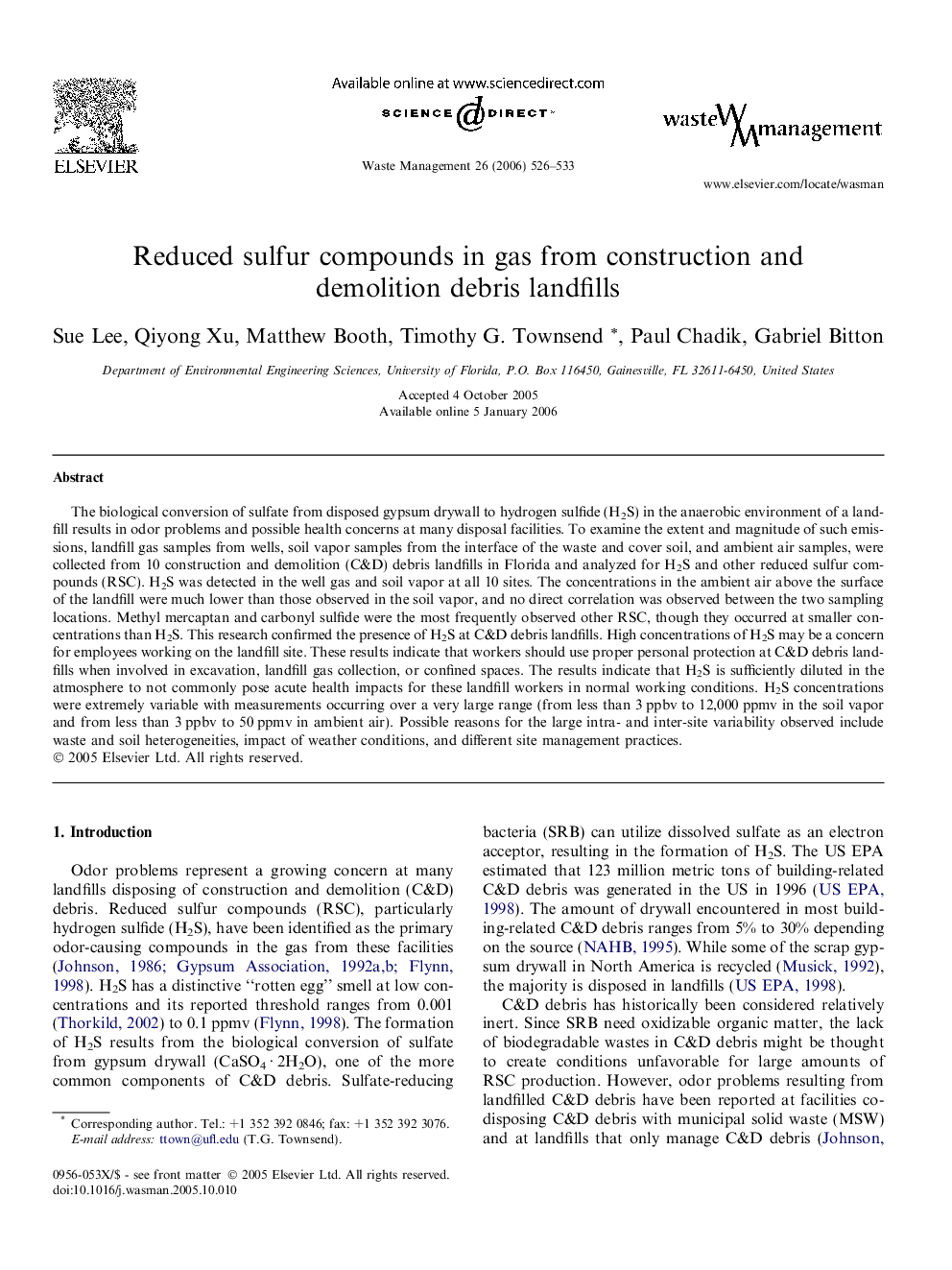| کد مقاله | کد نشریه | سال انتشار | مقاله انگلیسی | نسخه تمام متن |
|---|---|---|---|---|
| 4474045 | 1315121 | 2006 | 8 صفحه PDF | دانلود رایگان |

The biological conversion of sulfate from disposed gypsum drywall to hydrogen sulfide (H2S) in the anaerobic environment of a landfill results in odor problems and possible health concerns at many disposal facilities. To examine the extent and magnitude of such emissions, landfill gas samples from wells, soil vapor samples from the interface of the waste and cover soil, and ambient air samples, were collected from 10 construction and demolition (C&D) debris landfills in Florida and analyzed for H2S and other reduced sulfur compounds (RSC). H2S was detected in the well gas and soil vapor at all 10 sites. The concentrations in the ambient air above the surface of the landfill were much lower than those observed in the soil vapor, and no direct correlation was observed between the two sampling locations. Methyl mercaptan and carbonyl sulfide were the most frequently observed other RSC, though they occurred at smaller concentrations than H2S. This research confirmed the presence of H2S at C&D debris landfills. High concentrations of H2S may be a concern for employees working on the landfill site. These results indicate that workers should use proper personal protection at C&D debris landfills when involved in excavation, landfill gas collection, or confined spaces. The results indicate that H2S is sufficiently diluted in the atmosphere to not commonly pose acute health impacts for these landfill workers in normal working conditions. H2S concentrations were extremely variable with measurements occurring over a very large range (from less than 3 ppbv to 12,000 ppmv in the soil vapor and from less than 3 ppbv to 50 ppmv in ambient air). Possible reasons for the large intra- and inter-site variability observed include waste and soil heterogeneities, impact of weather conditions, and different site management practices.
Journal: Waste Management - Volume 26, Issue 5, 2006, Pages 526–533